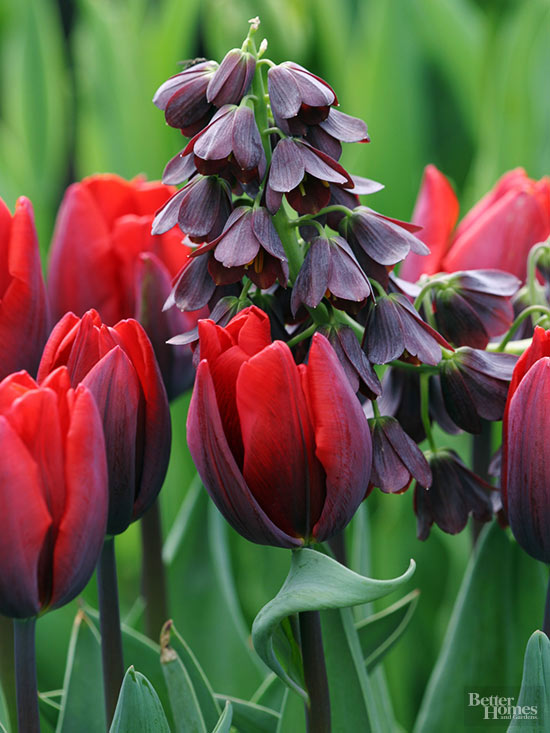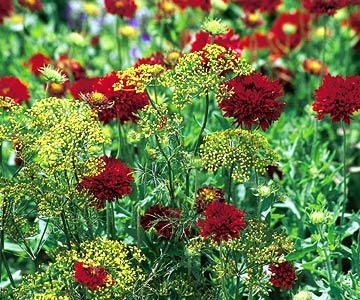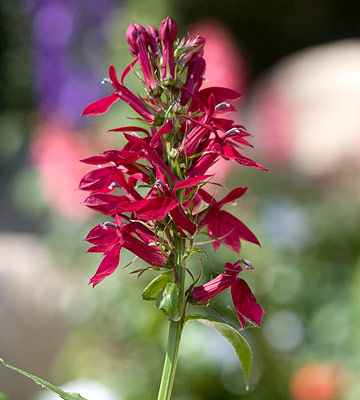






Red takes on different properties depending on what colors you pair with it. The most effective framing color for a red-flowered standout is its complement: green. When a border focuses on green foliage, a single red-flower or red-leaf accent truly shines.
Include red in your garden's color scheme by partnering it with silver or white. Silver calms red into good behavior in a border; white offers a crisp contrast to richly colored reds.
Related Slide Show: Best Red Flowers for Your Garden
continue reading below Knautia macedonica and dill
Knautia macedonica and dill
Write mystery into your garden plots by combining the deep reds, such as burgundy, maroon, and russet, with equally dark purple and chocolate brown. Such sultry combinations create the illusion of depth and hidden distances.
Red berries, twigs, and bark create magic in the winter garden against a snowy background.
See our all-red garden plan!

Related Feature: Bold Colors for Your Garden
Copyright © www.100flowers.win Botanic Garden All Rights Reserved